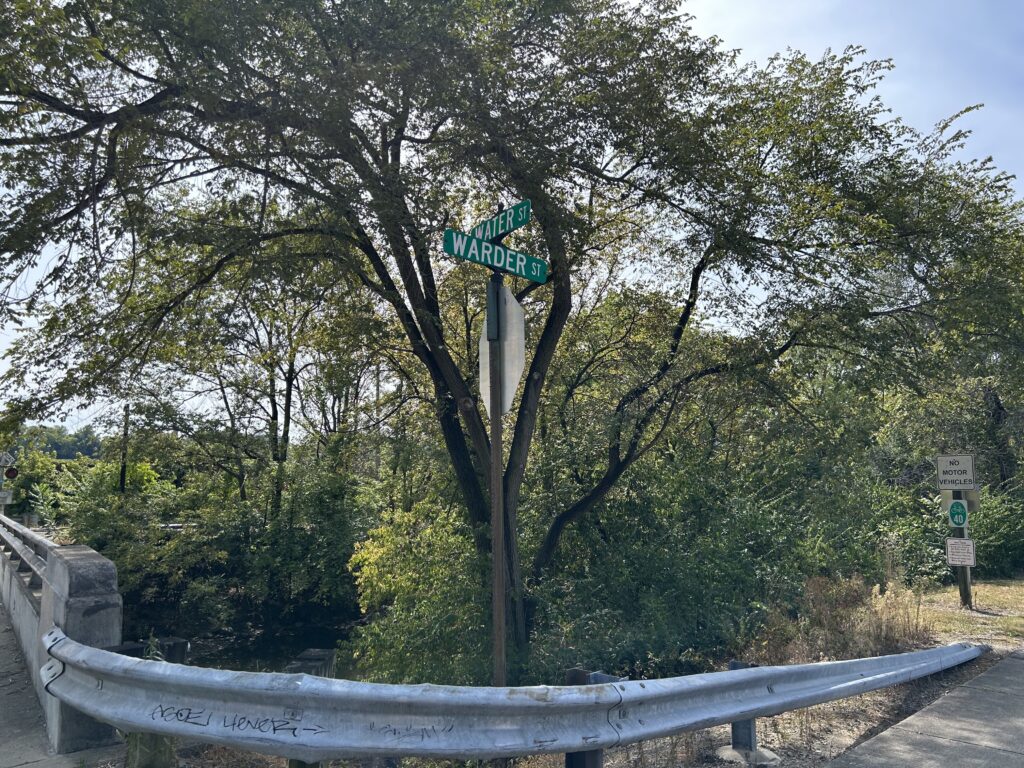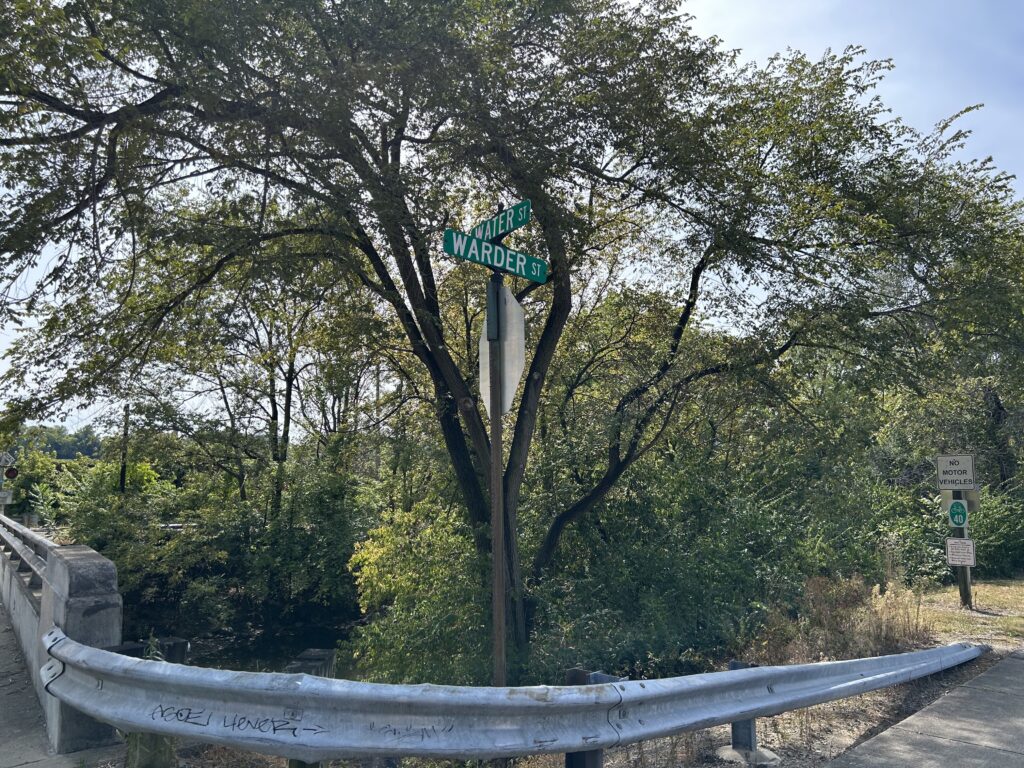Originally Authored at TheFederalist.com
SPRINGFIELD, Ohio — Springfield, Ohio is a blue-collar town of roughly 60,000 residents with a story that’s familiar to dozens of Rust Belt communities across the Midwest that have been transformed by job loss, opioids, and now, open migration.
Schuler’s Bakery greets visitors on the south side of town, not far from the interstate, as a relic of resilience having withstood the challenges faced by a declining economy for decades. Founded in 1937, the local sweet spot can now be found in two locations offering customers the kinds of cakes and pastries that define the small-town memories carried for generations long after residents have left.
The donuts are so rich they can make the teeth ache, but the sugar high is immediately crashed when confronted with the image of a town forever changed by the flood of more than 20,000 Haitian migrants. The horizon from the bakery’s front door introduces visitors to a dilapidated community now presented with traffic hazards as Haitians crowd the streets and parking lots of a Rust Belt community turned into Little Haiti.
“They don’t know how to drive,” a local tow truck driver on the southwest side told The Federalist. “They don’t know how to go by our rules.”
The tow truck operator named David declined to offer a last name out of fear of reprisal to his business, but he made clear that the influx of newcomers has brought more havoc than money to the depressed blue-collar community that was already struggling.
No one has to drive around Springfield for long to recognize a town in decay, struggling to cope with decades of hardship. Obesity is rampant, while faces soiled from obvious drug use creep through the grocery aisles of a depressed town that has lost nearly 20 percent of its American population since 1990. According to data from the Pew Research Center featured by NPR, “Median incomes fell an astounding 27 percent in Springfield between 1999 and 2014, more than any metropolitan area in the country.”
“I have a salvage yard and they come and buy parts from me every day,” David said, but “they don’t want to pay sales tax, they don’t want to do nothing. They just want to be here for free.” Meanwhile, the cost of rent, groceries, and social services continues to go up for everyone.
A City at Its Limit
Springfield became the epicenter of the nation’s immigration crisis this week after testimonies from frustrated residents at an August city meeting went viral.
“These Haitians are running into trash cans. They’re running into buildings. They’re flipping cars in the middle of the street, and I don’t know how like, y’all can be comfortable with this,” said a resident named Anthony Harris, who is now running for city council. “They’re in the park, grabbing up ducks by the neck and cutting their heads off and eating them.”
Another resident named Noel complained of harassment in her neighborhood.
“I have men that cannot speak English in my front yard screaming at me, throwing mattresses in my front yard, throwing trash in my front yard,” she said. “Look at me, I weigh 95 pounds. I couldn’t defend myself if I had to.”
“I don’t understand what you expect of us as citizens,” she added. “Who’s protecting us if we’re protecting them? Who’s protecting me?”
The shocking scenes whipped up a firestorm in the media on the eve of the first and only presidential debate between the two major presidential candidates in an election year where immigration dominates as a top issue. More than 10 million illegal immigrants have crossed under President Joe Biden, rendering the Haitian enclave of 20,000 Caribbeans roughly 50 miles from Columbus a mere microcosm of a nationwide crisis. Places such as Springfield and Aurora, a Colorado suburb of Denver where a Venezuelan gang has terrorized apartment complexes, have become election-year focal points emblematic of a dysfunctional strategy on immigration.
The establishment media were reflexively dismissive of the ensuing sensationalism around the testimonies in Springfield, writing off residents’ stories as conspiracies. The New York Times reported on Tuesday that the claims specifically related to the Haitians killing pets and wild animals hold “deep roots in racist stereotypes, which depict foreigners as willing consumers of a variety of undesirable animals.”
Even as The Federalist’s reporting on a specific goose-hunting episode near the corner of Water and Warner streets (complete with a police audio recording published by The Federalist on Tuesday) corroborated the stories of Haitians hunting birds, a reporter from the Texas Observer sought to debunk the story Thursday only to end up independently verifying the existence of the recording.

Tristan Justice/The Federalist
The hostile media frenzy, combined with the very real threat of danger presented by thousands of new migrants who now make up a fourth of the town, has kept other residents from sharing their first-hand experiences publicly. One woman who spoke with The Federalist anonymously said she was chased by a Haitian man wielding a machete in “one of the scariest interactions I’ve ever had.”
The incident happened on a July afternoon just months after another episode at a Walmart in southeast Springfield where a group of Haitian men stalked her around the store and eventually chased her back to her car.
“I’m at the point where I can’t even do the things I need to do because I feel unsafe,” she said of her hometown, adding that even the daily commute is a stressor as migrant drivers often veer down the wrong side of the road.
“There’s not one day that goes by that I don’t see some sort of accident by someone who does not speak English,” she said.
In May, one migrant was found guilty of multiple felonies after smashing a local school bus off the road when driving without a license last year. The crash killed an 11-year-old boy and injured more than 20 other students. The Haitian driver was sentenced to at least nine years in prison instead of immediate deportation.
Taxpayer Resources Stretched Thin
On Thursday, a bomb threat compelled the evacuation of six buildings downtown, including an elementary school. Springfield Police Chief Allison Elliott delivered a brief afternoon press conference but offered no information beyond noting which buildings were closed while recognizing law enforcement partners. The city’s spokeswoman, Karen Graves, quickly ushered the police out of the small room with reporters while one local cameraman pressed the city on why no one would take questions. Graves responded by offering that the media could send her emails.
All of The Federalist’s requests for interviews with the Springfield mayor, assistant mayor, police chief, and fire chief to answer questions about car wrecks, school resources, and social services were declined by Graves.
Springfield Mayor Rob Rue did, however, do an interview with PBS, published Monday.
“Springfield is a close community and has a big heart,” Rue said. “But at the same point, we’ve had this influx that has taxed all these services,” including “the infrastructure of the city, our safety forces, our hospitals, [and] our schools.”
The tow truck driver who spoke to The Federalist confirmed that accidents are up, while PBS reported classrooms have seen four times as many students requiring help with English-language services. According to The New York Times, consultations at the Rocking Horse Community Health Center are taking three times as long because of patients requiring interpreters.
“Six Haitian Creole speakers were hired and trained to assist newcomers,” the Times reported, “But expenditures on translation services jumped to an estimated $436,000 this year from $43,000 in 2020.”
While other services are overwhelmed by the surge of new migrants, Andy Irick, the executive director of the Second Harvest Food Bank, downplayed their impact on his ability to feed the community. Despite Haitians making up half the lineup outside the pick-up queue on a Thursday morning visit, Irick said the migrant population was “not anywhere near the biggest group of people we serve.”
“We operate as a warehouse, and we do some direct service here,” Irick said, adding that most of the food bank’s service is geared towards “food pantries and churches and other soup kitchens.”
“We provide them with food, and then they distribute it to the neighbors,” Irick said. Second Harvest Food Bank works with roughly 60 agencies across Clark, Champaign, and Logan counties.
What Irick didn’t say was whether there had been any requests from the food bank for cats.
Where Are the Cats?
The primary “conspiracy” dismissed by corporate outlets this week consists of accusations that Haitians are eating animals other than geese — including dogs and cats. The claim picked up steam Tuesday night when former President Donald Trump regurgitated the charge in ABC’s prime-time debate.
“They’re eating the dogs!” Trump said. “They’re eating the cats. … They’re eating the pets of the people that live there.”
It’s the kind of claim the corporate media use to characterize Trump as a dunce candidate eager to peddle blatant falsehoods to gin up controversy and outrage supporters. It’s also the kind of claim for which the press has demanded verifiable proof, as if the sacrificial rituals prominent in the voodoo culture embraced by Haitians are commonly publicized where such practices are taboo.
“Continuing to dump on Trump because of the ‘eating cats’ issue will create blowback on Nov. 5,” wrote Marianne Williamson on X in a now-deleted post. Williamson is a spiritual leader who ran for the Democrats’ presidential nomination twice. “Haitian voodoo is in fact real, and to dismiss the story out-of-hand rather than listen to the citizens of Springfield[,] Ohio[,] confirms in the minds of many voters the stereotype of Democrats as elite jerks who think they’re too smart to listen to anyone outside their own silo.”
Fewer stray cats are now seen downtown, according to one local, while another resident who spoke anonymously with The Federalist is meanwhile wondering what happened to all of the ducks in the town parks.
“Now if you go, you really don’t see a whole lot of ducks,” she said, compared to two years ago. As a lifelong resident, she added, “You know when things are wrong.”
The same woman who shared her tale about a Haitian migrant chasing her with machete told The Federalist she saw a Haitian man carrying what looked like a dead goose by Snyder Park in the city’s west end.

Tristan Justice/The Federalist
“I did not see him kill it, I did not see him eat it,” she said, “But I did absolutely see him carrying it.” The bird “looked to be dead because it was not flying around.”
The tow truck driver made clear in his interview with The Federalist that “Trump is not a liar.”
“They are eating the ducks out of the park,” he said, adding he tried it himself. “When I was a kid, I got a duck out of the park and we tried to cook it and eat it. You talk about nasty.”
How Did Ohio Become a Haven for Haitians?
Local frustrations with what had previously been a silent crisis brewing under the surface have led many to ask how 20,000 Haitians suddenly descended on the Rust Belt town between Dayton and Columbus. The Haitians in town could not answer because they did not speak English, but Federalist Senior Editor John Davidson reported on Tuesday that the blame lies solely with the Biden administration.
“Many Haitians were let in through a policy that allowed those arrested after crossing the border illegally to be paroled into the country,” Davidson reported. And “‘Paroled into the country,’” he added, “is just a jargon-y way of saying they were released from federal custody on their own recognizance, free to go wherever they want in the U.S.”
Ohio Republican Lieutenant Gov. Jon Husted wrote that many found their way to Springfield because “temporary employment agencies were connecting Haitians to jobs at local food processing plants.”
“There may be other explanations, but this is the one that I heard most frequently,” Husted wrote on X.
Robert F. Kennedy Jr.’s former vice presidential running mate outlined the irony behind evidence surfacing that Haitians in Springfield are hunting geese in the municipal parks. “It’s telling that even Haitian migrants recognize the processed food in our grocery stores isn’t suitable for consumption,” wrote Nicole Shanahan.
